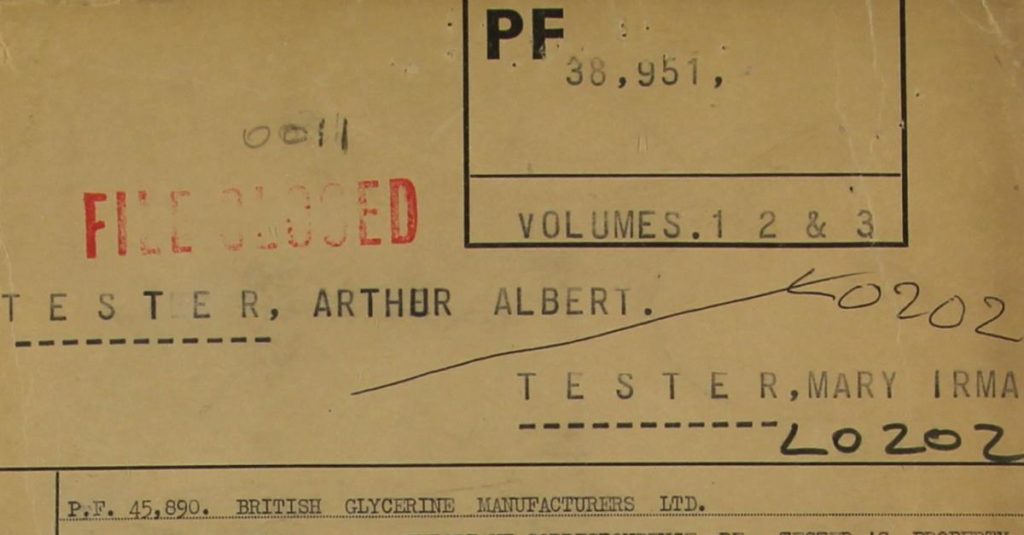We are following the story of Arthur Albert Tester, a larger-than life character who gained notoriety across Europe throughout the 1920s, 30s and 40s.
In the first blog of this series, I outlined Tester’s beginnings and how he managed to get into legal trouble in Germany, France and Belgium during the 1920s. Tester then made the leap to Great Britain where he made a name for himself, albeit not necessarily a positive one. (Part 3 of the blog series is here and Part 4 is here).
Naldera, Broadstairs, Kent
Despite filing for bankruptcy on 24 September 1930, Tester managed to purchase a large mansion in Broadstairs, Kent in 1931, a house known as Naldera. Tester apparently paid £6000 for the villa which had lain vacant since the death of its previous owner, Lord Curzon, who passed away in 1925. It’s interesting to note that when his bankruptcy proceedings finally wrapped up in 1933, the proceedings were discharged with Tester only being required to pay £400. This pattern of declaring bankruptcy and absconding with the funds was one that Tester repeated throughout his career.
At the same time that Tester was declaring bankruptcy and spending money, one report noted that, in 1931, Tester was suspected of being engaged in arms trafficking with a man named Paul Wognar. This affiliation with arms trafficking would certainly explain his ready access to funds. The allegations of Tester’s involvement with arms trafficking would follow him for the rest of his life and even beyond.
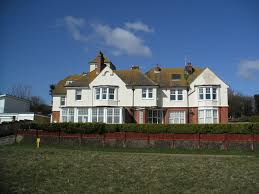
The 20-room mansion at Broadstairs had been built by George Nathaniel Curzon, 1st Marquess Curzon of Kedleston, the former Viceroy of India (1899-1905) and named after a favourite residence in India, Naldera. Upon his death, one of his daughters, Cynthia Blanche (1898-1933) inherited the Naldera property. Lady Cynthia, or Cimmie, as she was known, had married Oswald Mosley on 11 May 1920. Both Cynthia and her husband would become involved in politics, with Cynthia winning as a Labour Member of Parliament for Stoke-on-Trent in 1929. Her husband started out with the Conservatives, became an Independent, moved to the Labour Party, and eventually formed the British Union of Fascists. No surprise, then, to learn that Arthur Albert Tester soon became involved with the BUF.
A Veneer of Respectability
In many documents, Tester is listed as a banker and he played the role of successful financier quite convincingly, maintaining an office at 14 St. James Place, well-situated between The Ritz Hotel and St. James’ Palace near Green Park. Tester also travelled to the Continent quite frequently, particularly to The Hague, making deals and stirring up investor interest in various ideas and companies.
Arthur Albert Tester was nothing if not a convincing orator. He convinced people that he was an educated man, claiming to have earned the right to be called a “Doctor of Law of Germany and Switzerland” and a “Doctor of Philosophy of Belgium”. MI5 was skeptical of these claims and there is no evidence of his right to claim the title of doctor of anything.
Tester also managed to convince people that he had highly-placed connections. We saw this technique in the last blog, where he managed to convince a number of German companies that he was well-placed with the French and/or British occupation authorities. In the 1930s, Tester claimed close acquaintance with King Carol of Roumania, with Mussolini of Italy and, interestingly, with Dr. Josef Goebbels of Nazi Germany. In 1938, he told some associates in Holland that he had gone to school with Goebbels and that he, Tester, was well known at the German Embassy in London.
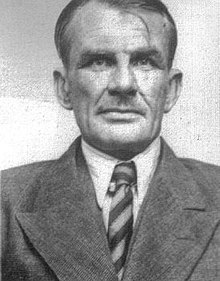
Many of the Broadstairs locals noted a large number of foreigners flowing in and out of Naldera. On top of that, MI5 noted with interest that Tester received numerous letters from Holland, Germany, France, Belgium, Austria and Japan. By June 1936, the authorities had worked up enough suspicion about Tester to order that his mail be opened and inspected. Interestingly, Tester sent and received most of his mail by rail, having it sent from Victoria Station in London and picking it up at the local train station. The local police suspected that Tester had “nefarious associations with foreigners” while MI5 suspected Tester of espionage but had nothing solid with which to charge him.
In November 1935, Hermann Goertz, a German spy, was arrested and Tester reportedly met some Germans at the Stafford Hotel (16 St. James Place, London – just around the corner from his offices at 14 St. James Place) and engaged in animated conversation. One source noted that Tester claimed to be representing the German Embassy at the Goertz trial. Whether this is actually true is another question. Given that Tester was conversing with a German crowd, he may have been pulling his usual trick of convincing his audience that he was more important and connected than he actually was. On the other hand, some authors have speculated that it was no coincidence that fascist conman Arthur Albert Tester, school teacher & BUF member William Joyce (the future Lord Haw-Haw) and German spy Hermann Goertz were all living in Broadstairs in the mid-1930s. If MI5 suspected anything… they did arrest Goertz in 1935… one would have expected them to scoop up the other two as well… perhaps. I have copies of Goertz’s MI5 files and if I come across any reference to Tester in the future… I’ll amend this blog post.
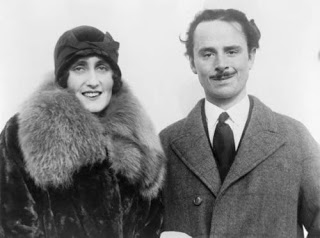
What is clear, is that Tester did become involved with the British Union of Fascists and was, apparently, one of their first members. In later years, Tester would claim to have served as Mosley’s aide-de-camp, second in command and/or Personal Conduct Officer. The veracity of that claim is doubtful. In the mid-1930s, Tester was made Chief Officer for the BUF’s Isle of Thanet branch. Tester also contributed a shop front to the BUF (for office space) and paid the salary of the district officer, as well as providing him with a car and a furnished house. Tester hired a number of members of the BUF for his household staff. Some articles even claim that Tester would stand outside the BUF’s shopfront and hand out fascist literature. At some point, however, Tester stopped contributing to the BUF and the Isle of Thanet branch fell into debt. Finally, in December 1936, Tester dismissed all but three of his household staff, most of whom were members of the BUF. Despite this apparent falling-out with the BUF, Tester would still draw on his connections with Mosley whenever he needed some prop to his credibility.
Slipping away from the Dutch Police
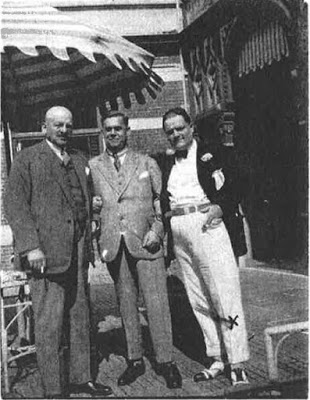
Photograph given to the Metropolitan Police by the Dutch Vice Consul.
The other two men are Germans: circa 1928 – Professor Goldberg of Berlin (centre) and Frans [sic] Shiften [sic] of Starnberg near Munich (left) (MEPO 3895)
In January of 1937, Tester managed to get into several different pots of trouble. To start with, he was found guilty of maliciously prosecuting a clerk and ordered to pay a £800 fine. Tester launched an appeal which failed.
At the same time, the Dutch Police putted out a wanted poster for “Dr.” Arthur Albert Tester. The N.V. Patria Verzekeringsmaatschappij (N.V. Patria Insurance company), in Rotterdam, had gone sideways and the Dutch police suspected Tester of being involved in swindles with the company.
In February 1937, Tester let go the remainder of his domestic staff, except the gardener, and sent two of his daughters to the Continent. One report notes that Violet (age 18) went to Hamburg to study ballet and Margit (age 15) went to a girl’s finishing school, College Femina de Boufffement, near Paris. The local police suspected that Tester might be preparing to leave the district and noted that he owed a lot of money to several tradespeople in Broadstairs. During the previous six months, Tester had had extensive renovations done to Naldera including new bedrooms, a new heating system and a new gymnasium. Some locals even whispered that Tester had a radio transmitting tower on his property and suspected him of communicating with the Germans. Tester himself denied these allegations vociferously.
In March 1937, Tester arrived back at Dover having managed to squeak out of Belgium, one step ahead of the Belgian authorities. He had gone to Brussels for some business negotiations but the Dutch police had gotten wind of his whereabouts. They requested his extradition from Belgium for fraudulent bankruptcy and forgery (likely related to the N.V. Patria insurance case). When the Brussels police showed up at Tester’s hotel room, they found two men in the room: Tester and his associate Thomas Maslin Harris. The two men pretended to be each other and the Belgian police took Harris into custody, allowing Tester to escape. When the police realized that they had the wrong man, it was too late, Tester had vanished. As for Harris, he was given twelve hours to leave Belgium. Harris was a long-standing associate of Tester’s, as well as a member of the BUF. He had a background in engineering, putting forth several patents related to internal combustion engines, and gave a veneer of legitimacy to many of Tester’s “inventions” for which he sought investors. Harris, however, didn’t have much of a head for finances apparently, declaring bankruptcy in 1921 and 1944.
A Finger in Every Pie
From mid 1937 to the end of 1938 Tester was involved with a number of companies which eventually made for explosive newspaper headlines. Similar to his activities in Germany during the early and mid 1920s, Tester seemed to move from company to company, leaving a trail of wreckage in his wake. One will notice that several names show up again and again: Thomas Maslin/Moslyn Harris, Charles Paquet and Joseph Victor Anthony Hepburn-Ruston (a committed fascist and the father of actress Audrey Hepburn). MI5 later noted that many of Tester’s companies were shell companies which didn’t really transact any business but simply served as channels for funds to bolster either the BUF accounts or the pockets of Tester and his closest associates.
Curzon Shipping Co.
14 St. James Place, the same address as Tester’s own office in London.
The company seems to have been founded in 1929. Tester was also reported to be involved with Lt. Col. Hon. Roper Curzon, son of Lord Teynham. This is likely Ralph Henry Roper-Curzon (born 6 Aug 1899) who was the son of Henry John Philip Sidney Roper-Curzon, 18th Baron Teynham and Mabel Green Wilkinson. Ralph Roper-Curzon (the son of Lord Teynham) had served as an officer with the East Kent Regiment during World War I. During the Second World War, he was a Captain (Acting Lt. Col.) with the Scots Guards. At first, I thought that this might be the same Curzon family who owned Naldera but the two families do not appear to be related, having different lineages. Dissolved by order of the Companies Act (1929) in April 1938.
British Glycerine Manufacturers Ltd.
14 St. James Place
The company was incorporated in October 1936 by Charles Paquet to take advantage of a “secret process” developed by one August Rasse. According to one MI5 report, the company did little real work but seemed to be a front for transferring money into and out of fascist accounts around Europe. The company bought an old brewery at Gravesend for £22,000 and later sold that same brewery to Jean Frisch (Wine Merchants) for £60,000 (see below). The company went bankrupt almost immediately (1938) and Paquet was expelled from England. Ruston was a director of the company. An MI5 report notes that the company was a fraud and that Tester had an interest in it. Other sources suggest that he actually owned the company. In March 1939, creditors moved against the company and in May 1944 it was finally dissolved under the Companies Act (1929).
Roumanian National Industrial Holdings
This company was associated with Tester before its assets were transferred to a new company, Victor Holdings (see below). Dissolved by order of the Companies Act (1929) in May 1942.
Victor Holdings
14 St. James Place
The company was founded by Thomas Maslin Harris with Charles Paquet as Governing Director. Dissolved by order of the Companies Act (1929) in April 1949.
Thor Engineering
This company was associated with Joseph Victor Anthony Ruston a.k.a. Joseph Victor Anthony Hepburn-Ruston and possibly Thomas Maslin Harris. The company also became involved with the Palvary fuel tank (see below) and was involved with weapons, vehicles and aircraft. On 27 September 1940, the London Gazette published a notice under the Companies Act of 1929 which listed a series of companies to be dissolved after three months unless reason was shown to the contrary. Thor Engineering was one of those companies, although there is no actual order of dissolution three months later, as with the companies above.
European Press Agency
10 St James Place
This was another front for companies operated by Ruston and Tester. Company directors were Anthony Hepburn-Ruston, Charles Paquet and William Agg Large. Some MI5 reports note that Tester was also a director. The European Press Agency also used the services of a German lawyer named Richard Wilhelm Behn who was co-director of the EPA and a close confidant of Tester’s. Dissolved by order of the Companies Act (1929) in February 1939.
Consolidated Industrial Agricultural Finance Co.
Tester was a director of the company along with Thomas Maslin Harris and Paul M. Lehmann. Dissolved by order of the Companies Act (1929) in May 1938.
Paramount Restaurant Flats
Tester, Paquet and Ruston sold failing shares of this company to the Jean Frisch (Wine Merchants) (see below). Slightly more interesting dissolution. There was a notice in the 9 December 1938 Gazette which noted that “a petition for winding-up of the above named Company by the High Court of Justice was on the 6th day of December 1938 presented to the said Court by the Mayor Aldermen and Councillors of the city of Westminster of Westminster City Hall”. It took a while, however, and the company was finally struck off the register and dissolved in April 1952.
Lillian (or Lilian) Estates Ltd.
Apparently Tester’s holding company for his property at Naldera. A voluntary winding-up of the company shows up in the Gazette in 1950 and 1953 but there is no final dissolution notice of the company.
Jean Frisch (Wine Merchants)
The company was incorporated in 1938 and dissolved in 1957. Company directors were Tester, Ruston, Paquet, Frisch, Reinemer, Bries, Captain Harry Humphreys (BUF) and Captain O’Reilly/O’Riley (BUF). MI5 referred to the directors as “a set of international crooks”. The Commercial Manager was Thomas M. Harris and the General Manager was Anthony Joseph Ruston. One report noted that Tester was present at board meetings and that “ he appeared to have been the master mind in most of the important financial transactions of the company”. According to MI5 reports, the company never really did any serious business transactions but was set up to extort vast sums of money from Baron Brugmann de Walzin (Belgian). The money was paid into the pockets of Thomas Maslin Harris and John Paul Friedrich Frisch. Dissolved by order of the Companies Act (1929) in March 1957.
Moritz Strauss Assoc.
14 St. James Place
The company was established in 1938 with fine wine cellars and tasting rooms. According to MI5 reports, the Managing Director was Hugo Richtheimer but the real manager was Hepburn-Ruston. Other company directors were apparently Ruston, Harris, Kenneth Hunt and Richtheimer. Dissolved by order of the Companies Act (1929) in June 1947.
Uniberia Ltd.
Ruston was involved with this company and MI5 notes it was a “spurious company run at a dead loss”. I include it here because on 29 June 1940, the offices of Uniberia were raided by Special Branch officers and one MI5 officer, Captain R.W.G. Stephens, our friend who later became commandant of Camp 020. This raid was noted in an MI5 report from 1955 which noted that Stephens was “now a Brigadier”. Dissolved by order of the Companies Act (1929) in March 1947.
Bullet-Proof Aviation Fuel Tank
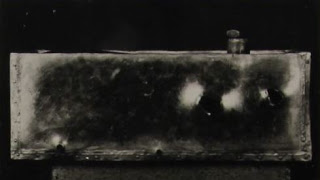
There are a few stories that illustrate the kind of business activities in which Tester engaged. In September 1937, Tester needed a new solicitor and reached out to one William Edward Agg-Large (37 Norfolk Street). In the course of conversation, Tester told Agg-Large about a Hungarian inventor (Else Palvary) who had created a bullet-proof aviation fuel tank. Agg-Large was interested in the idea and, after witnessing a successful test of the fuel tank, wanted to buy into the company.
On 25 September, 1937, a business agreement between Tester, Harris and Agg-Large was drawn up and Agg-Large bought a one tenth share of the company.
Tester and Harris also managed to convince Baron Brugmann de Walzin (Belgian) to buy shares in the company totalling £30,000. On 1 October, 1937, an agreement was signed between Harris (Victor Holdings), Baron Brugmann de Walzin (Brussels – b1878 d1945), Joseph Victor Ruston (Brussels) and Charles Paquet (Brussels – born 8 Dec 1878 in Huys).
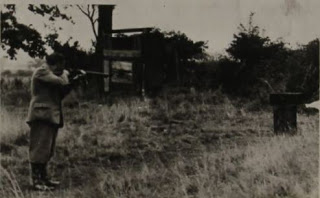
Baron Brugmann de Walzin was an exceedingly rich man and before the Second World War, Paquet had been the administrator of his estate. Unfortunately for the Baron, he seems to have been easily convinced by fraudulent schemers like Paquet, Ruston, Harris and Tester. The cash from de Walzin was distributed between several holding companies as well as three individuals: Palvary, Harris and Tester.
In October 1937, Tester arranged for a test of the fuel tank in front of Short Brothers (aeroplane manufacturers). Tester later claimed that the test had been successful and that the Air Ministry was interested in the fuel tank. Later investigations by the Metropolitan Police showed that Short Brothers were most definitely NOT interested in the fuel tank and that there was no evidence of any interest on the part of the Air Ministry. It would seem that Tester was simply trying to drum up investor interest in the fuel tank, allowing him to abscond with yet more funds.
As for poor Palvary, he was interviewed on 18 January 1939 by the Daily Express and said that he had not heard from the Air Ministry about his bullet proof fuel tank. When he enquired with them, they told him that they knew nothing about it… Tester apparently had no qualms about keeping his associates in the dark. Although Palvary would meet up with Tester again in the summer of 1939 as they tried to tempt the Italians into buying the tank. More on that in the next blog post.
Anti-Communist Newspaper funded by the Nazis
In March 1938, another one of Tester’s concerns erupted onto the front pages of British newspapers. A company called the European Press Agency, with offices in Britain, was planning to purchase one of the oldest Belgian newspapers and convert it into an anti-communist newspaper.
On 23 March, 1938, however, a debate in the Belgian Parliament brought up a rather unsavoury bit of news: apparently the European Press Agency had received £110,000 from Josef Goebbels via German industrialists. The fact that the company was affiliated with British “financiers” naturally dragged the whole mess into the British press.
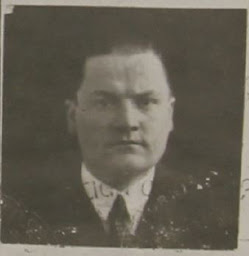
There were several familiar names associated with the debacle: Joseph Ruston, William Edward Agg-Large (who was conveniently in Cuba escaping bankruptcy proceedings at the time) and Charles Paquet (Belgian).
Interestingly enough, Tester’s name was dragged into the scandal as well and he gave numerous interviews to the press vociferously denying the pro-Nazi allegations. He said that he had no affiliation with the European Press Agency (although later MI5 reports called him a director of the company) but was simply an advisor to Ruston… although one newspaper reported that Tester had been present at EPA board meetings.
It was at this time that Tester claimed that he was Mosley’s personal aide-de-camp, a claim that was never confirmed by any member of the BUF. Tester also told several newspaper reporters that his father had been an English Consul (MI5 found no evidence of that) and that Tester himself had been put into a German concentration camp during the First World War as an Englishman (no proof of that).
Reporters noted that Tester spoke rapid, fluent English, albeit with a German accent, and was quoted as saying:
“I bear Germany no malice for that. All my sympathies are German. But I love my country, England.”
“I have spent a great deal of my life in Germany, and I have a great deal of sympathy for German aspirations, since my mother was German, but I shall never forget my country, which is British. My father was a British subject and I am British”“If a war came with Germany I should be among the first to go into the trenches.” (although he did not say for what side…)“I would not allow a British company to be used for German propaganda in this country. I believe that every country should settle its own affairs.”“Although I do not want to boast, I predict that within two years Mosley will be in power in this country.”
When MI5 dug into the EPA, they found several informants who reported that, during meetings in Brussels, Tester had boasted about his connections with Goebbels. His denunciations to the press, therefore, need to be taken with a grain of salt. As noted above, Tester tended to claim friendship with highly connected individuals in order to convince potential investors/marks that he had influence. Whether Tester actually knew Goebbels is up for discussion.
While Tester played the part of an affronted businessman very well in the press, he didn’t just leave it there. In April 1938 Tester went down to the Metropolitan Police to defend himself and offered a statement to one Inspector Tarr. Vociferous denunciations of all wrongdoing were followed by a sly request for assistance. He had a Hungarian inventor who had a new type of hand grenade, an automatic trench mortar and an electric bayonet. He wanted advice from Inspector Tarr on how to extend the man’s stay in England. Ever the consummate fast-talker…
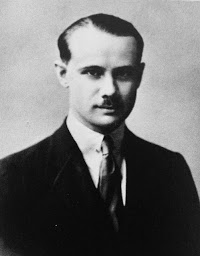
(from British Guardian blog)
It should be noted that Ruston and Harris were both interned under Defence Regulation 18B in mid-July 1940. Harris’s case was reviewed by MI5 in September 1940 and while they noted that he “was guilty of commercial dishonesty on a grand scale” there was nothing which suggested he was a security concern (i.e. working for the enemy) although he was apparently assisting Tester who was abroad (more on that in the next blog). Ruston remained in detention for the rest of the war and was released in April 1945.
As for Tester… already in March 1938, MI5 was questioning BUF members about Tester and his claim that he was Mosley’s aide-de-camp. Prominent members of the BUF denied that he ever played that role for Mosley and that he was just a very old member of the BUF. Whatever the case, Tester wouldn’t hang around long enough to be interned by the British authorities.
In the fall of 1938, Tester leased a yacht “Blue Bird” and sailed from Southampton, bound for Dublin. Along the way, the yacht detoured to the coast of France and picked up a boat load of foreigners according to the ship’s Chief Engineer. One source noted that Tester wanted to hold a meeting regarding Jean Frisch (Wine Merchants) but since he couldn’t go to Belgium, and Paquet was banned from setting foot on UK soil, they decided to hold the meeting on the boat in Dublin harbour. The boat’s passengers included the usual crowd: Tester, Ruston, Paquet, Humphreys, O’Reilly, Harris, Reinemer, Frisch, and one Ernest C. Randall Sr., the lawyer for Moritz Strauss Assoc. The same source noted that Baron Brugmann de Walzin had actually bought 14 St. James Place and transferred it to Moritz Strauss Assoc. I feel rather bad for de Walzin, he seems to have been an easy mark for this crowd of swindlers.
On 8 December 1938, an MI5 officer wrote a note which stated that “S.I.S. report on telephone today that Friedrich Tester was never British Consul in Stuttgart”. It is interesting to note that Joseph Victor Anthony Ruston, born in Czechoslovakia of a British father and a Czech mother, also claimed that his father was an honourary British Consul in Czechoslovakia. It is not surprising that Tester and Ruston flocked together given their similar backgrounds.
On that same day in early December, MI5 received word that the Dutch were not going to request Tester’s extradition from England until the prosecution of other individuals from the N.V. Patria affair had concluded.
Perhaps Tester got wind that the English sharks were circling closer and closer, for within the month, he would leave England, never to return.
[Part 1 of the series is here, Part 3 of the series is here and Part 4 link is here]
Sources
National Archives (Kew) – Security Service files on Arthur Albert Tester (KV 2/616, 2/617, 2/618, 2/2266)
National Archives (Kew) – Security Service files on Joseph Victor Anthony Hepburn-Ruston (KV 2/3190, 2/3191)
Metropolitan Police – FOI publication of MEPO 38/95 – police file on Arthur Albert Tester
The London Gazette – various notices
All the Devils are Here, David Seabrook, Granta Books, London, 2002.
Audrey Hepburn’s Greatest Charade by Susan Gardiner, 2020 – article on Medium.com
Thanet Watch press release – What were Three Nazis doing in Broadstairs? – August 2012 – have not been able to find the actual article.
Bygone Kent, Volume 10, p. 157-160 – The North Foreland Nazi by W.H. Bishop
Bygone Kent, Volume 28, p.209-213 – The Mysterious black shirt of Broadstairs by Nick Evans.
Ancestry – genealogical records
FindmyPast – genealogical records
